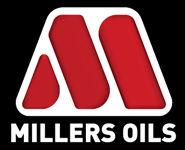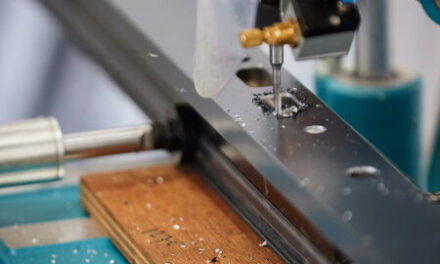Exposure to metalworking fluids can cause a range of problems for machine tool operators, from skin irritations such as dermatitis through to breathing difficulties or more seriously lung diseases and allergic reactions. Martyn Mann, Technical Director at Millers Oils offers ten tips for using metalworking fluids.
Tip 1: Regular employee check-ups

Metalworking fluids need to be handled with care and that means looking after your employees. Best practice involves regular, proactive checking of employee health, particularly for dermatitis and respiratory problems. All symptoms should be reported promptly to senior management and HR.
Tip 2: Correct storage
Correct storage of metalworking fluids in packages and drums is vital. Exposure to excessive heat or cold can have a detrimental effect on the fluid and care should be taken not to allow rainwater to accumulate on the top of a drum to ensure there is no water ingress. Always store in a bunded area and use a regular stock rotation regime. Always protect emulsion concentrates from frost.
Tip 3: Regular monitoring
Metalworking fluid is not stable, in that it can change over time and degrade. To ensure optimum machine performance it is important that fluid is regularly monitored, particularly for bacteria and pH values. For example, a very high pH could present a risk of skin problems, whilst too low a pH could be due to microbial contamination and also lead to reduced corrosion protection. We would recommend weekly dip-paper or meter test for pH and a weekly microbial dipslide test for bacteria.
Tip 4: Check coolant concentration
The correct coolant concentration optimises tool-life and produces better finished components with no bacteria problems or skin irritation for operators. We recommend a weekly refractometer test to ensure that coolant is still at the recommended concentration level.
Tip 5: Cleaning
Coolant systems need to be regularly cleaned in order to function properly and that means the sump, pipework, machine and guards, before re-filling with fresh metalworking fluid. Be careful to ensure that you are using a system cleaner compatible with the fluid and don’t ever put clean fluid in a dirty machine or sump. What’s more, care must be taken with the disposal of fluid – never dispose into the public drains or sewers.
Tip 6: Avoid using compressed air
Compressed air should be avoided, if possible, as a method of cleaning because the use of high pressure air lines to blow components clean will, by definition, also blow fluid into the air and around the machine shop. If there is no alternative, use only low pressure and adopt suitable controls, such as personal protective equipment (PPE) to protect operator health.
Tip 7: Use machine cleaning fluids
Machine cleaning fluids are a must for their ability to eradicate debris and destroy bacteria. These can be added to the machine sump and used in conjunction with the metalworking fluid for a short period before emptying.
Tip 8: Take care when mixing
Fluids need to be mixed carefully which means the use of a mixing valve or a clean container to prepare the mixture. Most importantly, only use drinking quality water of the correct hardness. Never mix metalworking fluid in the machine sump tank or use water from fire hoses or other contaminated sources. If mixing manually, always add the concentrate to the water and NOT the other way round.
Tip 9: Use a refractometer
Don’t guess your dilution levels when mixing metalworking fluid. Best practice involves the use of a refractometer to check the fluid which can be purchased for a relatively low cost.
Tip 10: Protect your people
Anyone handling metalworking fluid should be wearing personal protective equipment (PPE) which should include eye protection and safety shoes. Immediately after use, all operators should be encouraged to wash their hands and apply barrier cream. Where possible the machining process should be enclosed, with machine guards and spray covers used. Under no circumstances should mist or spray be allowed into the machine shop.



